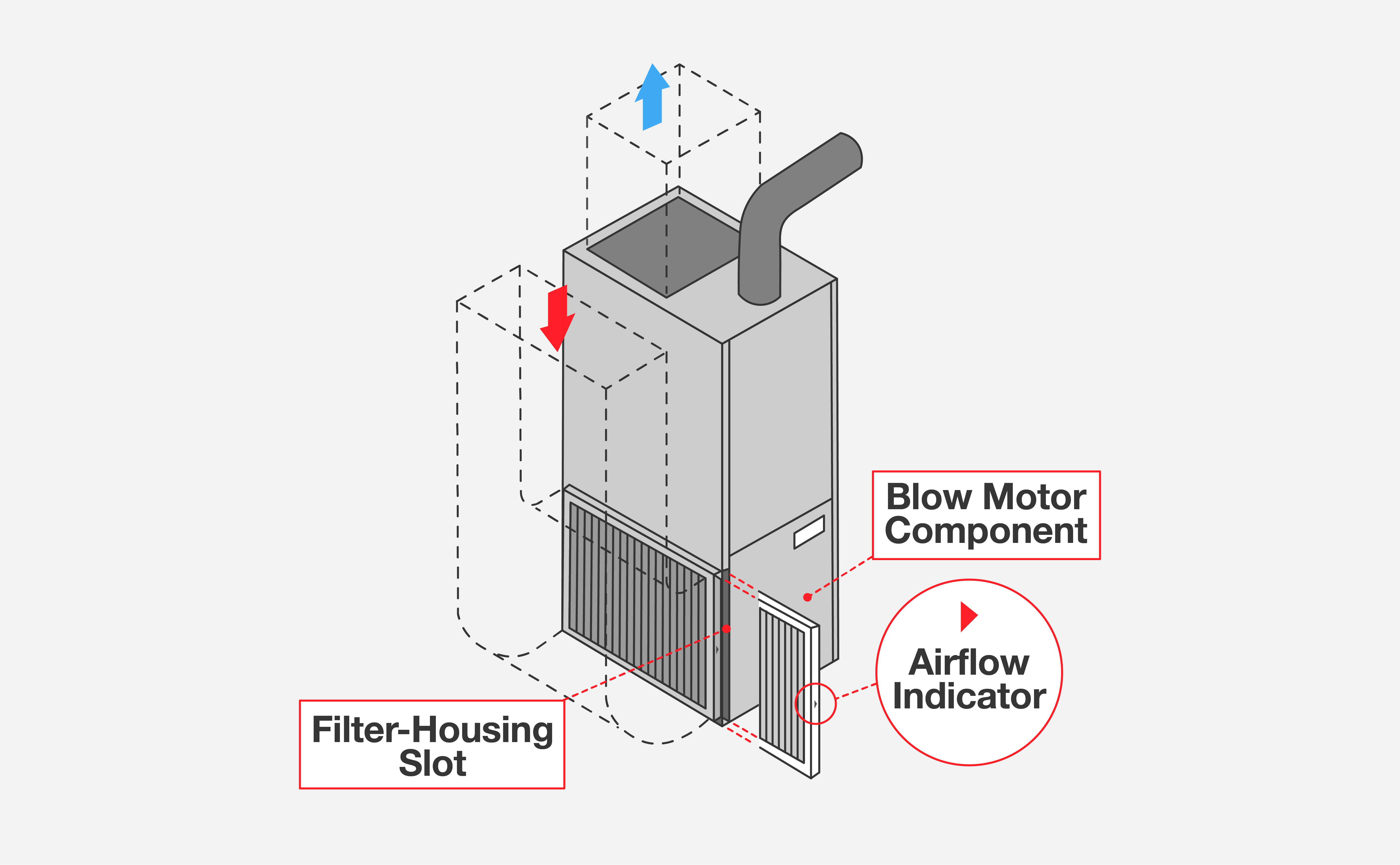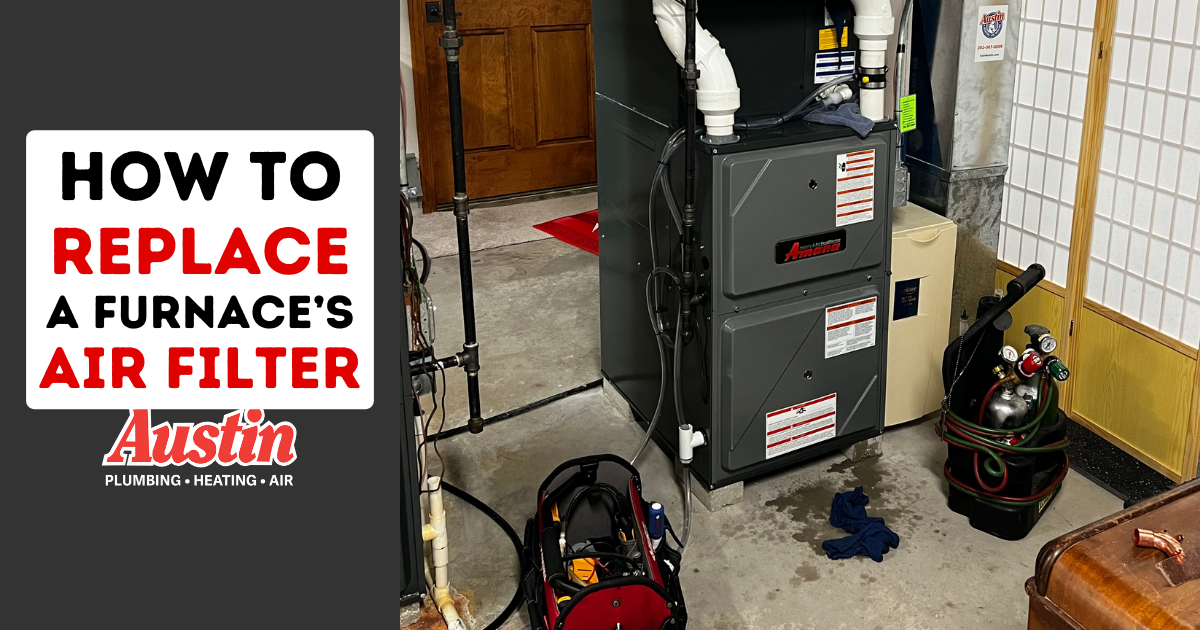Installing Air Filter Direction

Understanding Air Filter Direction: A Comprehensive Guide for Homeowners and HVAC Professionals
One of the most frequently overlooked aspects of HVAC system maintenance is the proper installation of air filters. While it may seem trivial, ensuring the correct air filter direction is crucial for optimal system performance, energy efficiency, and indoor air quality. In this guide, we'll delve into the importance of filter direction, how to identify it, common mistakes, and the overall impact on your HVAC system.
Why Air Filter Direction Matters
Air filters are designed to trap dust, pollen, pet dander, and other airborne particles, preventing them from circulating through your home and damaging sensitive HVAC components. Installing the filter in the correct direction ensures that these particles are effectively captured as air flows through the system. Installing it backward can lead to several problems:
- Reduced Airflow: A backward filter can restrict airflow, forcing your system to work harder and consume more energy.
- Decreased Filtration Efficiency: The filter may not capture particles as effectively, leading to poorer indoor air quality.
- System Damage: Restricted airflow can cause the evaporator coil to freeze, compressor failure, and other costly repairs.
- Increased Energy Bills: As your system struggles to circulate air, your energy bills will inevitably increase.
Identifying the Correct Air Filter Direction
Fortunately, identifying the correct air filter direction is usually straightforward. Most air filters have an arrow printed on the side, indicating the direction of airflow. This arrow should point in the direction of the airflow, which is toward the furnace or air handler. Here's a step-by-step guide:
- Locate Your Air Filter: Air filters are typically located in the return air duct, either near the furnace/air handler or in a wall or ceiling vent.
- Remove the Old Filter: Carefully remove the old filter, noting its orientation. This can serve as a visual guide for installing the new filter.
- Identify the Airflow Arrow: Look for an arrow printed on the side of the new filter. This arrow indicates the direction of airflow.
- Install the New Filter: Insert the new filter into the slot, ensuring that the arrow points toward the furnace or air handler.
- Secure the Filter: Close the access panel and ensure it's properly sealed.
Common Mistakes and How to Avoid Them
Despite the simplicity of air filter installation, some common mistakes can negatively impact your HVAC system. Here are a few to watch out for:
- Ignoring the Airflow Arrow: This is the most common mistake. Always check the arrow and ensure it points in the correct direction.
- Installing the Wrong Size Filter: Using a filter that's too small or too large can create gaps and allow air to bypass the filter entirely. Measure the filter slot carefully and purchase the correct size.
- Forgetting to Replace the Filter: Dirty air filters restrict airflow and reduce filtration efficiency. Replace your filter regularly, typically every 1-3 months, depending on the type of filter and the air quality in your home.
- Using the Wrong Type of Filter: Different filters have different MERV (Minimum Efficiency Reporting Value) ratings, which indicate their ability to capture particles. Choose a filter that's appropriate for your needs, balancing filtration efficiency with airflow.
Types of Air Filters and MERV Ratings
Air filters are available in various materials and MERV ratings. Understanding these options is crucial for selecting the right filter for your needs.
- Fiberglass Filters: These are the least expensive filters, offering minimal filtration. They're primarily designed to protect the HVAC system from large particles. MERV rating: 1-4.
- Pleated Filters: Pleated filters offer improved filtration compared to fiberglass filters, capturing more dust, pollen, and pet dander. MERV rating: 5-13.
- Electrostatic Filters: These filters use an electrostatic charge to attract and trap particles. They offer good filtration and airflow. MERV rating: 4-12.
- HEPA Filters: High-Efficiency Particulate Air (HEPA) filters are the most effective at capturing small particles, including bacteria and viruses. They're often used in hospitals and cleanrooms. MERV rating: 17-20. HEPA filters are not always compatible with residential HVAC systems due to their high air resistance.
The MERV rating indicates a filter's ability to capture particles of different sizes. A higher MERV rating indicates better filtration, but it can also restrict airflow. Consult your HVAC system's manual or a qualified technician to determine the appropriate MERV rating for your system.
The Impact of Air Filter Direction on HVAC System Efficiency
As mentioned earlier, installing the air filter in the wrong direction can significantly impact your HVAC system's efficiency. Restricted airflow forces the system to work harder, leading to increased energy consumption and higher energy bills. A properly installed filter, on the other hand, allows for optimal airflow and filtration, reducing strain on the system and improving its overall efficiency.
When evaluating HVAC systems, consider the system's AFUE (Annual Fuel Utilization Efficiency) rating for furnaces, SEER (Seasonal Energy Efficiency Ratio) rating for air conditioners, and HSPF (Heating Season Performance Factor) rating for heat pumps. These ratings indicate the system's energy efficiency. However, even the most efficient system will perform poorly if the air filter is not properly maintained.
Maintenance and Warranty Considerations
Regular air filter replacement is essential for maintaining your HVAC system's performance and longevity. Consult your system's manual or a qualified technician for recommended filter replacement intervals. Failure to maintain the air filter can void your system's warranty.
When purchasing a new HVAC system, carefully review the warranty terms and conditions. Most warranties require regular maintenance, including air filter replacement, to remain valid. Keep records of your maintenance activities to provide proof of compliance in the event of a warranty claim.
Choosing the Right HVAC System: Brands and Models
Selecting the right HVAC system is a significant investment. Consider the following popular brands and models, keeping in mind their energy efficiency ratings and warranty terms:
- Carrier: Offers a wide range of furnaces, air conditioners, and heat pumps with high AFUE, SEER, and HSPF ratings. Known for their reliability and advanced features.
- Trane: Another reputable brand with a focus on energy efficiency and durability. Trane systems often feature advanced technology and long warranties.
- Lennox: Known for their innovative designs and high-efficiency systems. Lennox offers a variety of furnaces, air conditioners, and heat pumps to suit different needs and budgets.
- Goodman: A more affordable option that still provides reliable performance. Goodman systems may not have as many advanced features as some other brands, but they offer a good value for the price.
When comparing models, pay attention to the SEER rating for air conditioners and the AFUE rating for furnaces. A higher rating indicates better energy efficiency, which can save you money on your energy bills over time. For example:
- Carrier Infinity 26 Air Conditioner: Up to 26 SEER
- Trane XV20i Air Conditioner: Up to 22 SEER
- Lennox SLP98DF Furnace: Up to 98.7% AFUE
Conclusion: Prioritizing Air Filter Direction for Optimal HVAC Performance
Ensuring the correct air filter direction is a simple but crucial step in maintaining your HVAC system's performance, energy efficiency, and indoor air quality. By following the guidelines outlined in this article, you can avoid common mistakes and ensure that your system operates at its best. Remember to replace your air filter regularly, choose the right type of filter for your needs, and consult with a qualified HVAC technician if you have any questions or concerns.
By prioritizing air filter direction, you can protect your investment in your HVAC system, reduce your energy bills, and enjoy a healthier and more comfortable home environment.










